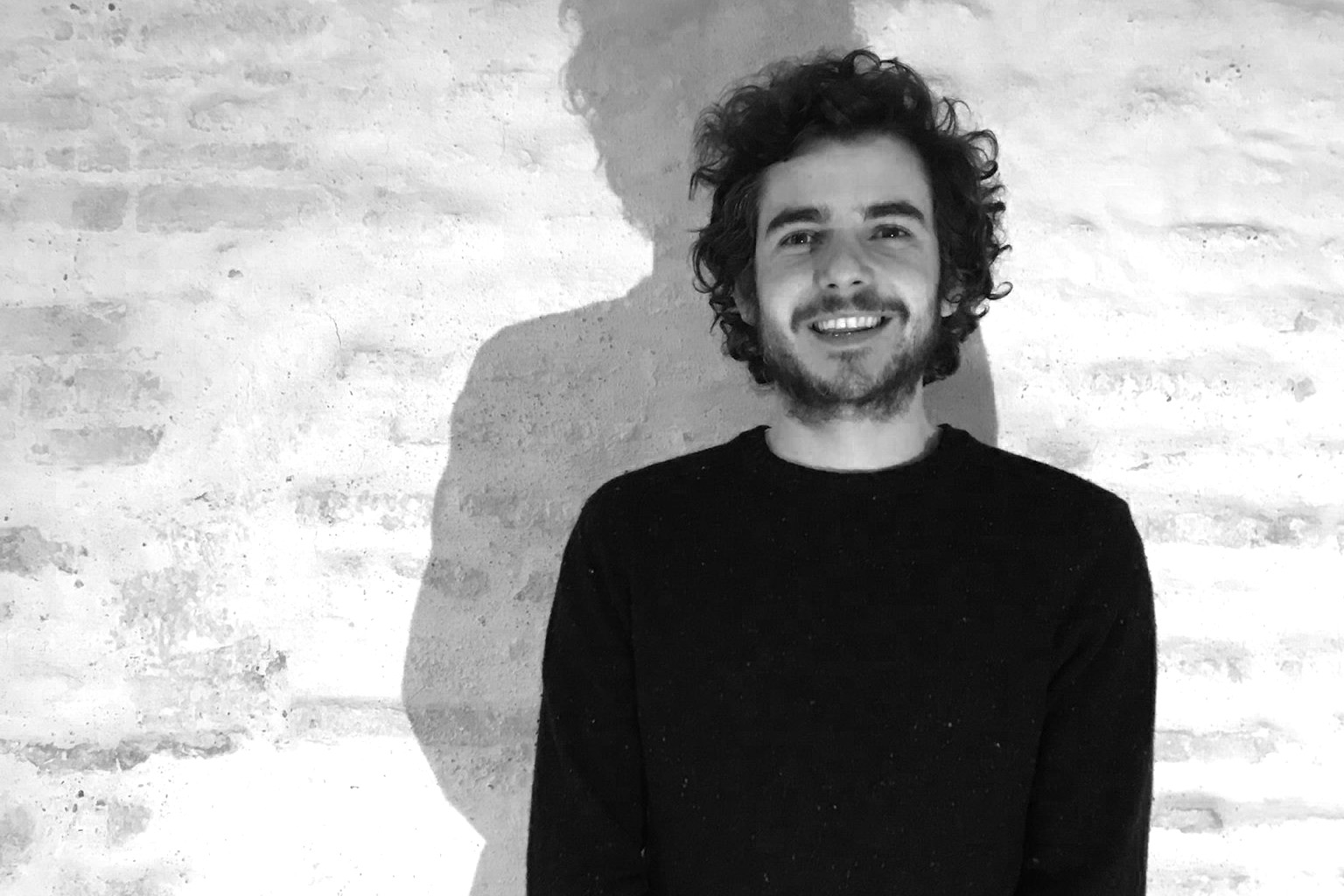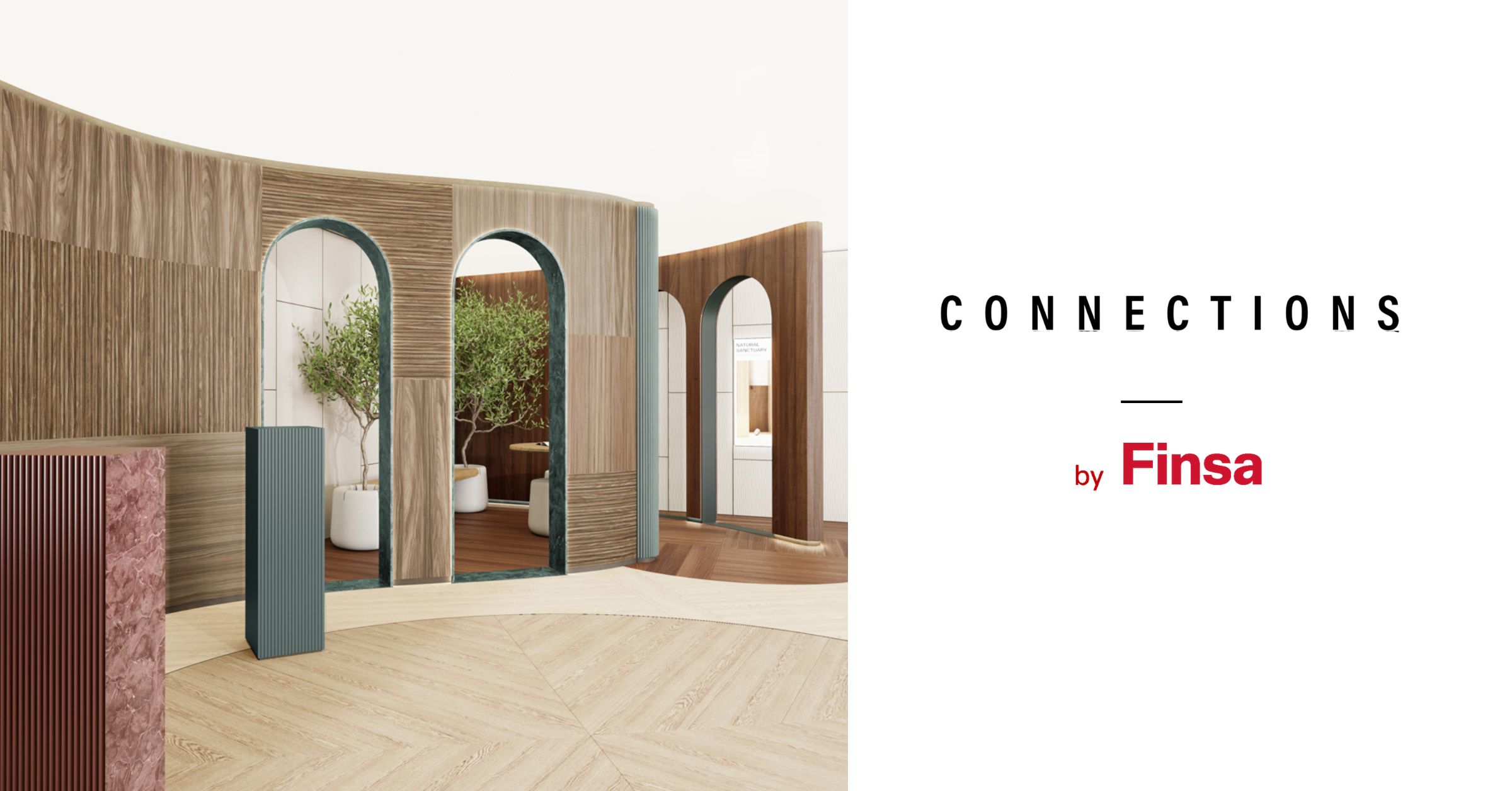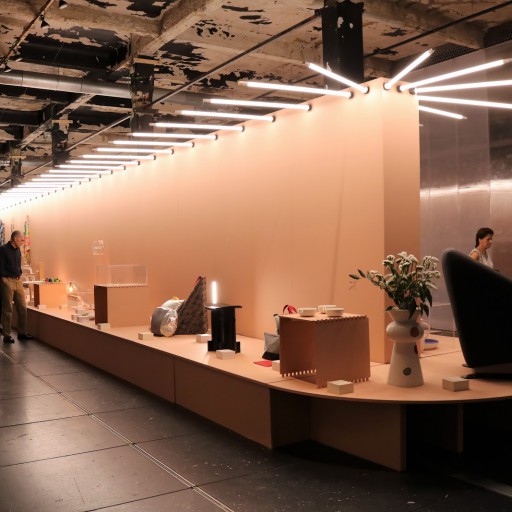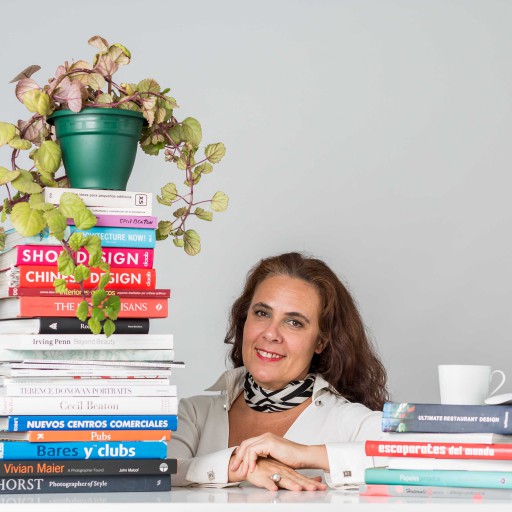Immersive experiences, interactive installations, virtual reality, video mapping…At Vitamin, they are experts in playing with the audience’s senses and emotions in order to create unique experiences. It’s a resource that brands are using more and more. Big companies like Zara, Smart, Siemens, LG, Nestlé and Finsa have all trusted them. We’re connecting to their digital world via their CEO, Pablo Álvarez.

You’re taking part in Astral Bodies, Finsa’s concept for Milan Design Week 2019, by designing an interactive setting that immerses the visitor in an ‘astral world’. What has the experience been like?
It’s been very positive, because we embraced the concept and had a vision from the beginning, which has been very well-received by FINSA, our client, as well as by ENORME Studio, our collaborators for the more physical part of the project.
We believe our universe of light and interactivity works alongside the aesthetic created by ENORME Studio and adapts to the space very well. The setting that we created, and the Fibracolour meteorites do not leave anybody feeling indifferent.
Immersive experience for Astral Bodies by Finsa at Milan Design Week 2019
How does one become a designer of immersive experiences? What path led you to becoming the CEO of Vitamin?
I studied industrial engineering and specialised in electronics. Apart from being an electronics enthusiast, I’ve always been very connected to the world of art and design. Together with Javi, a partner in Vitamin and the creative director with a background in fine arts, and Borja, another partner and the administrative director with a background in audiovisual production, we began to combine the three disciplines of technology, art, and design, to create interactive installations.
Vitamin is a little house of Babel made up of professionals from the fields of engineering, programming, design, architecture, audiovisual creation, marketing, and cultural management. How did that mix come about? Does working with people with such different profiles enrich your work?
At Vitamin we don’t have a concrete profile given that the profile of a designer of interactive experiences has not yet been established. We formed Vitamin with people from different disciplines because together we are able to design installations and experiences from beginning to end. Working in this way is very enriching because it provides you with a 360-degree view of the project without leaving out any aspect of it, and at the same time we learn from what each person brings.
What do your interactive and immersive experiences provide for your clients?
All the installations that we work on are custom experiences which provide exclusivity, innovation, and interaction with the product or service that these clients want to present. At the same time, each experience is a world of different situations that is always focused on the client’s objective.
What projects do you have in the works at the moment?
We just presented an installation for different music festivals which will take that are taking place this summer in several Spanish cities. We are also dedicating a large part of our time to developing artistic projects, meaning projects that don’t have a brand or a client behind them. For this we are creating an artistic exhibition which will be presented at the Centro Cultural del Carmen (del Carmen Cultural Centre). The artistic exhibition combines science, art, and technology, and will be presented at different festivals around the world in the future.
Where do you think your work will take you in the future?
The future of our work is marked by technological development, which is why we are open to experimenting with new technology and are always combining it with art.
What would be your dream project?
The dream project is that which gives us creative freedom to experiment with new tools in an idyllic space and of course with an unlimited budget (laughs).
What is the key to creating a good experience?
The key is to first conceptualise the message to then be able to design and develop the channel for that message. What I mean is more technological complexity does not mean a better experience if there isn’t a clear message and if the objectives that were set out initially are not achieved. Something to take into account is that there is direct communication between the installation and the user.
What part of your work do you enjoy most and why?
The part that I most enjoy is the artistic section that we undertake in the studio, as we have complete creative freedom when it comes to designing. At the same time, the satisfaction of successfully exhibiting a project that has involved hard work, and which exceeds the expectations of the client, is what pushes us to keep getting better.
What inspires you every day? Do you have a ritual, or do you consult a specific publication that’s like a bible for you?
Like I said before, each of us comes from a different discipline so we each have our rituals and are inspired by different artists, stores, magazines, and events. For me, as the person responsible for the whole technical part of the studio, I look at new technology and/or their applications every day, I work with them and I focus on being able to introduce them into different interactive installations.
Taking into your account your professions, is their still space for the analogue in your lives?
The answer to this is a resounding YES. At Vitamin we believe in the fusion of the material and digital worlds and we try to make sure this fusion is present in our all our projects. We work at separating ourselves from technology that is more well-known and common like tablets, screens etc., to focus on interactions where the different interfaces are materials that are not technological, like wood, paper, or the star product of the installation, which is what happened with Astral Bodies.
How do you all disconnect when you need to relax and recharge your batteries to be able to continue with your creative work?
It might sound strange, but to disconnect and relax we develop our own projects, giving our creativity free reign. We are also a young and united team, so we constantly get together outside of the studio, usually in places with music.
What makes a good designer?
A good designer is a complete professional that gets his design to connect to the user, whatever the discipline.
If you hadn’t dedicated yourself to this, what do you think you would be doing now?
I can’t imagine doing anything else, but I suppose I would be working in engineering and doing some freelance work.
Who are your inspirations and which professional would you like to connect with?
We have lots of inspirations from the worlds of design, technology, and art. My biggest inspiration is Daito Manabe, a multi-faceted artist connected to programming and musical composition. We would also like to work with artists like Olafur Eliasson and Nonotak Studio.




